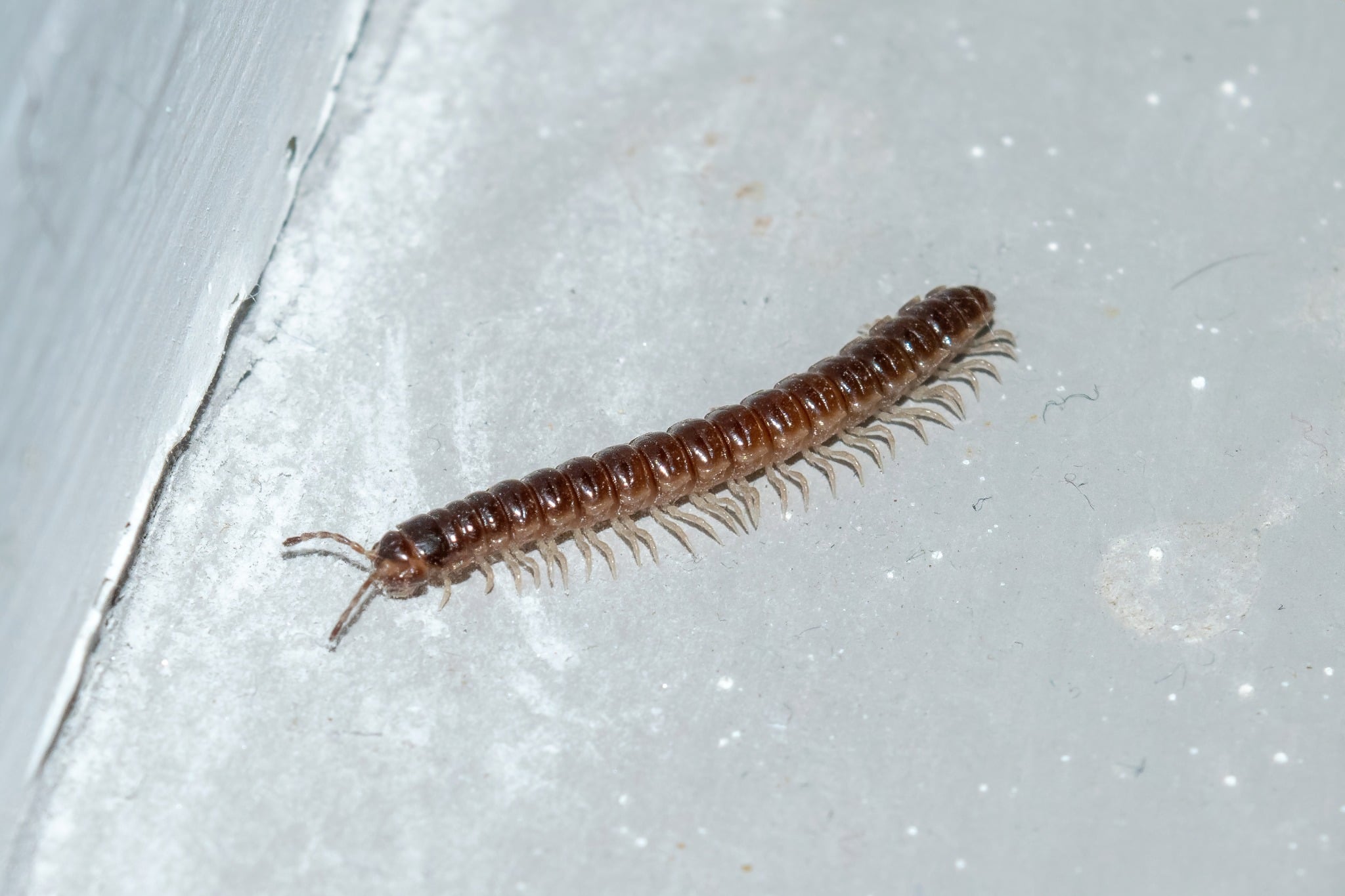

Articles
Why Are There Centipedes In My Basement
Modified: May 6, 2024
Discover the reasons for centipede infestations in your basement with our informative articles. Learn how to prevent and eliminate these pests effectively.
(Many of the links in this article redirect to a specific reviewed product. Your purchase of these products through affiliate links helps to generate commission for Storables.com, at no extra cost. Learn more)
Introduction
Having centipedes in your basement can be a disconcerting experience. These long, multi-legged creatures may startle and repulse you, leaving you wondering how and why they found their way into your home. Understanding the reasons behind their presence is crucial in order to effectively deal with them. In this article, we will delve into the world of basement centipedes, exploring their characteristics, behavior, and the factors that attract them to your basement.
Centipedes are ancient creatures that have roamed the Earth for millions of years. They are part of the arthropod family, characterized by their numerous legs and elongated bodies. With their segmented bodies and elongated antennae, they can be quite intimidating. However, it’s important to note that most centipedes are harmless to humans and actually play a beneficial role in controlling other insect populations.
When it comes to basements, centipedes are commonly encountered due to the dark and damp environment they provide. Basements tend to have higher humidity levels and are prone to moisture buildup, creating an ideal habitat for centipedes. While they may primarily be outdoor-dwelling creatures, certain factors can entice them to seek shelter and establish a presence in your basement.
Throughout this article, we will explore the common types of centipedes found in basements, the reasons why they are attracted to these areas, the potential health risks they pose, and effective prevention and control measures to mitigate their presence. Whether you’re dealing with house centipedes, stone centipedes, or tropical centipedes, understanding their behavior and implementing the proper strategies can help you maintain a centipede-free basement environment.
By the end of this article, you will have a comprehensive understanding of why centipedes may be invading your basement and how best to address the issue. So let’s dive into the world of these fascinating creatures and learn how to reclaim your basement from their presence.
Key Takeaways:
- Embrace a clean, dry, and well-ventilated basement to deter centipedes and create a healthier living space. Implement natural remedies and professional pest control if needed for effective centipede management.
- Understand centipedes’ behavior and attraction to basements to address moisture, food sources, and structural entrances. Utilize prevention and control measures, including sealing entrances and removing food sources, to minimize centipede presence.
Read more: Why Is My Basement So Hot
Understanding Centipedes
Centipedes are fascinating creatures with unique physical characteristics and behaviors. By gaining a deeper understanding of these aspects, we can better comprehend their presence in basements and how to deal with them effectively.
Physical Characteristics
Centipedes belong to the class Chilopoda, which includes about 8,000 known species. They are elongated arthropods with many segments, each containing a pair of legs. The number of legs varies between species, with some having as few as 15 pairs while others can have up to 177 pairs.
Their bodies are typically flattened and segmented, featuring a characteristic pair of long antennae on the head. The legs are attached to the segments, and the last pair is usually elongated to assist in capturing prey and defense.
Centipedes exhibit a range of colors, including brown, reddish-brown, and black. Some species have small stripes or spots on their bodies. Their bodies are covered in a tough exoskeleton, providing protection and support.
Behavior and Habits
Centipedes are predominantly nocturnal creatures, preferring to venture out at night to hunt for prey. They are carnivorous predators, feeding on a variety of small insects, spiders, and even other centipedes.
Although they lack eyes, centipedes possess sensory organs called “tactile hairs,” which help them navigate their surroundings and locate prey. Their elongated antennae are also highly sensitive to vibrations, enabling them to detect movement and potential food sources.
Centipedes are known for their remarkable speed and agility. They can move swiftly, aided by their numerous legs, allowing them to pursue and capture their prey effectively. They are also excellent climbers, adept at scaling vertical surfaces and navigating through crevices.
When threatened, centipedes may exhibit defensive behavior, such as curling up their bodies or releasing a secretion that serves as a deterrent to predators. However, most basement-dwelling centipedes pose little threat to humans and are unlikely to bite unless provoked.
Understanding the physical characteristics and behavior of centipedes is essential in devising effective strategies for dealing with their presence in basements. In the next section, we will explore the common types of centipedes found in basements and the reasons why they are drawn to these areas.
Common Types of Basement Centipedes
Basements are known to attract a variety of centipede species due to the dark, damp, and secluded environment they provide. Understanding the different types of centipedes that commonly inhabit basements can help identify and address their presence more effectively. Here are three common types of centipedes you may encounter in your basement:
Read more: How To Get Rid Of Centipedes In Basement
1. House Centipedes
House centipedes, scientifically known as Scutigera coleoptrata, are among the most common centipede species found in homes and basements. They are easily recognizable with their long, slender bodies and numerous legs. House centipedes can range in size from 1 to 1.5 inches in length.
These centipedes have a distinctive appearance, with their elongated bodies sporting a yellowish-brown or gray coloration. They have long antennae and long, delicate legs, which make them fast and agile. House centipedes are nocturnal hunters, preying on insects such as spiders, silverfish, and ants.
Despite their eerie appearance, house centipedes are relatively harmless to humans and provide a natural form of pest control. However, their presence can still be unsettling, leading homeowners to seek ways to prevent and remove them from their basements.
2. Stone Centipedes
Stone centipedes, also known as Lithobius spp., are another type of centipede commonly found in basements. They are often mistaken for house centipedes due to their similar appearance, with long, segmented bodies and multiple legs.
Stone centipedes vary in size, with some species measuring only a few centimeters, while others can reach up to 2 inches in length. They have a dark brown or black coloration and are equipped with long antennae and robust legs.
Stone centipedes are primarily outdoor dwellers but can find their way into basements through small cracks and openings. They feed on various insects and arthropods, fulfilling a crucial role as natural predators.
3. Tropical Centipedes
Tropical centipedes, commonly known as Scolopendra spp., are larger and more intimidating compared to their counterparts. These centipedes can grow up to several inches in length and possess a reddish-brown or dark brown coloration.
Tropical centipedes have an aggressive nature and are equipped with venomous jaws, allowing them to immobilize and capture larger prey. While rare, their bites can cause pain, swelling, and discomfort in humans, warranting caution when dealing with these species.
Though not as common in basements as house or stone centipedes, tropical centipedes can make their way into basements located in regions with warmer climates or through imported goods.
Being aware of the various types of centipedes that can inhabit basements will help you identify and address their presence more effectively. In the next section, we will explore the reasons why centipedes are drawn to basements and what factors contribute to their infestation.
Reasons for Centipedes in Basements
Centipedes are often found in basements due to the favorable conditions these areas provide for their survival. Understanding the reasons behind their presence can help you effectively address and prevent centipede infestations in the future. Here are three key factors that attract centipedes to basements:
Read more: Why Is My Basement Ceiling Leaking
1. Moisture and Humidity
Basements are notorious for their high levels of moisture and humidity. Factors such as poor ventilation, water leakage, and inadequate drainage can contribute to a damp environment that centipedes find ideal.
Centipedes are highly sensitive to dehydration and require moisture to survive. They are naturally drawn to areas with high humidity, making basements with moisture issues a prime habitat. The dampness provides them with the necessary conditions to thrive and reproduce.
Condensation on walls, pipes, and windows, as well as stagnant water, can create a perfect breeding ground for centipedes. By addressing and controlling the moisture levels in your basement, you can significantly reduce centipede attraction.
2. Food Sources
Centipedes are carnivorous predators, feeding on a variety of small insects and arthropods. Basements can harbor an abundance of potential food sources for centipedes, further drawing them into these areas.
Insects like spiders, silverfish, ants, and cockroaches are commonly found in basements, making them a feast for centipedes. These pests seek shelter and food in dark, hidden spaces, providing a constant food supply for centipedes to thrive on.
If your basement has a pre-existing pest problem, especially with the types of insects that centipedes prey upon, it is more likely to attract centipedes. Implementing effective pest control measures to eliminate their food sources can help reduce centipede infestations.
3. Structural Entrances
Centipedes can enter basements through small cracks, gaps, and openings in the structure of your home. These entry points provide an easy pathway for them to access the basement and seek refuge.
Basements with damaged or poorly sealed windows, doors, foundation cracks, or utility penetrations are particularly vulnerable to centipede infiltration. Centipedes are adept climbers and can squeeze through narrow openings, making it crucial to seal any potential entry points to prevent their entry.
Regular maintenance and inspections can help identify and seal these structural entrances, reducing the likelihood of centipedes finding their way into your basement.
Moisture, food sources, and structural entrances all play a significant role in attracting centipedes to basements. By addressing these factors through moisture control, pest management, and sealing entry points, you can effectively reduce the presence of centipedes in your basement. In the next section, we will explore the potential health risks and concerns associated with centipede infestations.
Health Risks and Concerns
While centipedes are generally harmless to humans, their presence in basements can still cause some health risks and concerns. It is important to be aware of these potential issues in order to take appropriate measures to address and prevent centipede infestations. Here are two primary health risks associated with centipedes:
Read more: Why Does My Basement Flood
Allergies and Reactions
Some individuals may be allergic to centipedes or have sensitivities to their shed exoskeletons or secretions. Coming into contact with centipedes or their remnants can trigger allergic reactions, ranging from mild irritation to more severe symptoms.
Common allergic reactions to centipedes may include skin rashes, itching, redness, and respiratory issues. If you or your family members have a known allergy to centipedes or experience any adverse reactions, it is advisable to consult with a healthcare professional for appropriate medical advice and treatment.
Additionally, individuals with pre-existing respiratory conditions, such as asthma, may experience exacerbation of their symptoms when exposed to centipede allergens. Maintaining a clean and well-ventilated basement can help minimize the risk of triggering allergic reactions in susceptible individuals.
Bites and Venom
Most centipedes have venomous jaws, which they use to immobilize and kill their prey. While bites from basement-dwelling centipedes are relatively rare, they can occur if the centipede feels threatened or provoked.
A centipede bite typically results in localized pain, swelling, and redness, similar to a bee or wasp sting. The severity of the bite reaction can vary depending on the species of centipede, individual sensitivity, and the location of the bite. In some cases, centipede bites can cause more severe symptoms, including systemic reactions such as nausea, headache, and dizziness.
If you are bitten by a centipede and experience any concerning symptoms or an allergic reaction, it is important to seek medical attention promptly. Most centipede bites can be treated with basic first aid measures, such as cleaning the wound with soap and water, applying a cold compress to reduce swelling, and taking over-the-counter pain relievers if necessary.
Preventing centipede bites can be achieved by avoiding direct contact with centipedes and maintaining a tidy and clutter-free basement environment. Removing potential hiding spots and sealing entry points can help minimize the chances of encountering centipedes in your basement.
While the health risks associated with centipedes are generally low, it is essential to be cautious and take necessary precautions, especially for individuals with allergies or sensitivities. In the following section, we will explore preventive measures and control strategies to minimize centipede presence in your basement.
Prevention and Control Measures
Preventing and controlling centipede infestations in your basement involves addressing the underlying factors that attract them. By implementing effective prevention and control measures, you can minimize the presence of centipedes and create an environment that is inhospitable to their survival. Here are four key strategies to consider:
1. Moisture Control
Centipedes thrive in damp environments, so it is crucial to control moisture levels in your basement. Start by addressing any water leaks, repairing plumbing issues, and ensuring proper drainage away from the foundation of your home.
Consider using dehumidifiers to decrease humidity levels in the basement, especially in areas prone to excess moisture. Keep the basement well-ventilated to allow for air circulation and prevent condensation buildup on walls, windows, and pipes.
Regularly inspect and clean gutters, downspouts, and drainage systems to ensure they are functioning properly and directing water away from your home. By maintaining a dry basement, you can deter centipedes from seeking shelter in the area.
Read more: Why Is My Basement So Humid
2. Sealing Entrances
Centipedes can enter your basement through small cracks, gaps, and openings in the structure of your home. It is essential to identify and seal potential entry points to prevent their infiltration.
Inspect the foundation, walls, windows, doors, and utility penetrations for any gaps or openings. Use caulk or weatherstripping to seal cracks and gaps, and replace damaged or missing window and door seals. Pay attention to areas where utility lines enter your basement and seal those openings as well.
Keep in mind that centipedes can also enter your basement through floor drains, so consider installing drain covers to prevent their entry. By sealing these entrances, you can significantly reduce the chances of centipedes finding their way into your basement.
3. Removing Food Sources
Centipedes are drawn to basements that provide a plentiful supply of insects and arthropods, which serve as their primary food source. By eliminating or reducing these food sources, you can discourage centipede infestations.
Implement effective pest control measures to manage common basement insects such as spiders, silverfish, ants, and cockroaches. This may involve regular cleaning, removing clutter, and using baits, traps, or non-toxic insecticides when necessary.
Reduce the availability of food by sealing food containers and properly disposing of waste. Keeping your basement clean and free of crumbs or spills will discourage insect activity and, consequently, deter centipedes from establishing a presence.
4. Proper Ventilation
Good ventilation is crucial in preventing excessive moisture buildup and maintaining a dry basement environment. Ensure that your basement is adequately ventilated by opening windows, if possible, or installing ventilation fans.
If natural ventilation is insufficient, consider using mechanical ventilation systems, such as exhaust fans or dehumidifiers, to promote air circulation and reduce humidity levels. Regularly check and clean air vents and filters to ensure optimal airflow.
Proper ventilation helps to inhibit the growth of molds, fungi, and other moisture-related issues, creating an unfavorable environment for centipedes.
By implementing these prevention and control measures, you can significantly reduce the likelihood of centipede infestations in your basement. However, if your centipede problem persists or is severe, it may be necessary to seek professional pest control services. In the next section, we will explore some natural remedies and treatments for centipede infestations.
Natural Remedies for Centipede Infestations
If you’re dealing with a centipede infestation in your basement and prefer natural methods of control, there are several remedies you can try. While these methods may not completely eradicate the problem, they can help reduce centipede populations and deter their presence. Here are a few natural remedies for centipede infestations:
Read more: Why Is My Basement Drain Backing Up
Diatomaceous Earth
Diatomaceous earth is a powdery substance made from the fossilized remains of diatoms, a type of algae. It is effective in controlling centipedes and other crawling insects. Diatomaceous earth works by dehydrating the centipedes’ exoskeletons, eventually leading to their demise.
To use diatomaceous earth, sprinkle a thin layer along baseboards, cracks, crevices, and other areas where centipedes are likely to travel. Be sure to use food-grade diatomaceous earth and follow the manufacturer’s instructions for application and safety precautions.
Essential Oils
Several essential oils are known for their pest-repellent properties, including centipedes. Peppermint, lavender, tea tree, and eucalyptus oils are particularly effective in deterring centipedes due to their strong scents.
Mix a few drops of your preferred essential oil with water in a spray bottle and apply it along the baseboards, windowsills, doorways, and other entry points. You can also soak cotton balls in the oil and place them in strategic locations. The scent of the oils should discourage centipedes from entering your basement.
Sticky Traps
Sticky traps, also known as glue traps, are a simple yet effective way to capture centipedes and other crawling insects. These traps consist of a sticky adhesive surface that traps centipedes when they come into contact with it.
Place the sticky traps along walls, corners, and areas where centipedes are commonly seen. Some sticky traps come pre-baited with attractants, while others may require adding a small amount of bait to lure the centipedes.
Check the traps regularly and replace them as needed. Sticky traps are a non-toxic and chemical-free method of capturing centipedes and can be used in conjunction with other control measures.
Remember, while natural remedies can be effective in reducing centipede populations, they may not provide complete eradication. If your centipede infestation persists or becomes severe, it may be necessary to seek professional pest control services for more comprehensive treatments.
By incorporating natural remedies into your centipede control efforts, you can minimize the presence of these creatures in your basement. In the next section, we will discuss when it may be appropriate to seek professional pest control assistance.
Seeking Professional Pest Control
In some cases, a centipede infestation may require the expertise of a professional pest control service. While natural remedies and preventive measures can be effective, there are situations where calling in the professionals is warranted. Here are some guidelines on when to consider seeking professional pest control and tips on choosing a reputable service:
Read more: Why Does My Basement Smell Like Sewer
When to Call a Professional
Consider contacting a professional pest control service for assistance if:
- You have a severe or persistent centipede infestation that is difficult to control with DIY methods.
- You’re unsure of the extent of the infestation and require a thorough inspection and assessment.
- You have underlying issues contributing to the centipede infestation, such as excessive moisture, structural problems, or other pest-related concerns.
- You’re dealing with a specific species of centipede that poses potential health risks or is known to be aggressive or venomous.
- You have attempted various control methods without success, and the infestation continues to worsen.
Professional pest control technicians have the knowledge, experience, and tools to effectively identify, treat, and prevent centipede infestations. They can provide targeted solutions tailored to your specific situation, ensuring a more thorough and long-lasting result.
Choosing a Reputable Pest Control Service
When selecting a pest control service, it’s essential to choose a reputable and reliable company. Here are some factors to consider:
- Experience and Credentials: Look for a pest control service with years of experience in dealing with centipedes and other pests. Check if they are licensed, insured, and certified by local pest control associations.
- Customer Reviews and Recommendations: Read reviews and testimonials from previous customers to gauge their satisfaction level. Ask friends, family, or neighbors for recommendations of reputable pest control companies they have used.
- Services Offered: Ensure that the pest control service offers centipede treatment and control in their service portfolio. Inquire about their methods and products to ensure they align with your preferences, such as environmentally friendly or low-toxicity options.
- Free Inspection and Estimates: Look for companies that offer free inspections and estimates before providing a treatment plan. This allows you to understand the scope of the infestation and the associated costs involved.
- Guarantee and Follow-up Services: Inquire about any guarantees or warranties provided by the pest control company. Additionally, ask if they offer follow-up visits or ongoing monitoring to ensure long-term effectiveness.
Take your time to research and compare different pest control services in your area. Obtain multiple quotes and ask for detailed explanations of their treatment plan and expected outcomes. Choose a pest control service that aligns with your needs, budget, and commitment to effective and environmentally friendly pest management.
Remember, professional pest control services can handle centipede infestations efficiently and provide valuable guidance on preventing future infestations. In the final section, we will conclude our discussion on dealing with centipedes in your basement.
Conclusion
Dealing with centipedes in your basement can be a challenging and unsettling experience. However, by understanding their characteristics, identifying the reasons for their presence, and implementing effective prevention and control measures, you can reclaim your basement from these creepy crawlers.
Centipedes are attracted to basements due to the moisture and humidity they provide, as well as the abundance of food sources and structural entrances. By controlling moisture levels, sealing entry points, removing food sources, and ensuring proper ventilation, you can create an environment that is less favorable for centipedes to thrive.
While natural remedies such as diatomaceous earth, essential oils, and sticky traps can help reduce centipede populations, severe or persistent infestations may require professional pest control assistance. Knowing when to seek professional help and choosing a reputable pest control service can ensure a thorough and effective treatment plan.
It is important to keep in mind that centipedes are generally harmless to humans, although some individuals may have allergies or sensitivities to them. Understanding the potential health risks, including allergies, reactions, and the rare possibility of bites, can help you take appropriate precautions and seek medical attention if needed.
By combining knowledge, preventive measures, natural remedies, and professional pest control if necessary, you can successfully manage centipede infestations in your basement. Maintaining a clean, dry, and well-ventilated environment will not only deter centipedes but also contribute to a healthier and more comfortable living space.
Remember, each situation may differ, and it’s essential to assess your specific circumstances and seek professional advice when needed. With patience, persistence, and the right approach, you can take control of your basement and enjoy a centipede-free environment.
If you're tired of unwanted guests in your home, our next guides are just what you need. Learn from pest control experts on how to tackle pantry moths, ensuring your food storage remains safe and clean. For those keen on keeping their living space pristine, our comprehensive tips on home maintenance will prove invaluable. With straightforward strategies, maintaining your house becomes less of a chore, letting you enjoy a well-kept home year-round. Don't miss out on mastering these essential household skills!
Frequently Asked Questions about Why Are There Centipedes In My Basement
Was this page helpful?
At Storables.com, we guarantee accurate and reliable information. Our content, validated by Expert Board Contributors, is crafted following stringent Editorial Policies. We're committed to providing you with well-researched, expert-backed insights for all your informational needs.
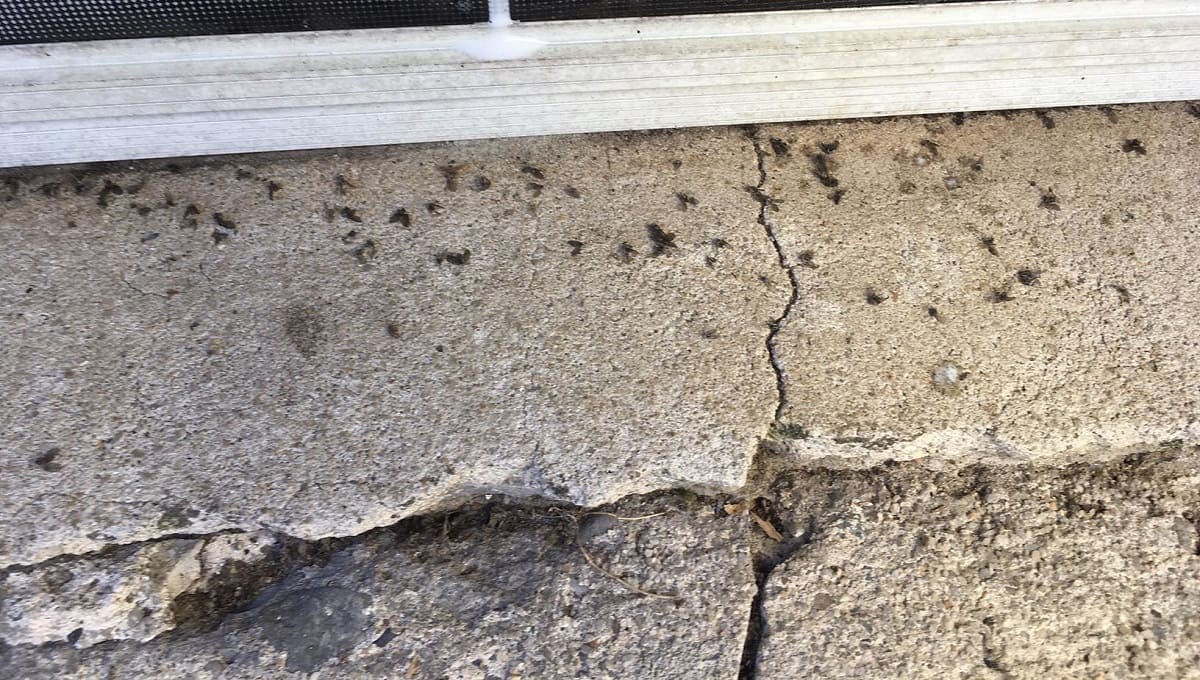

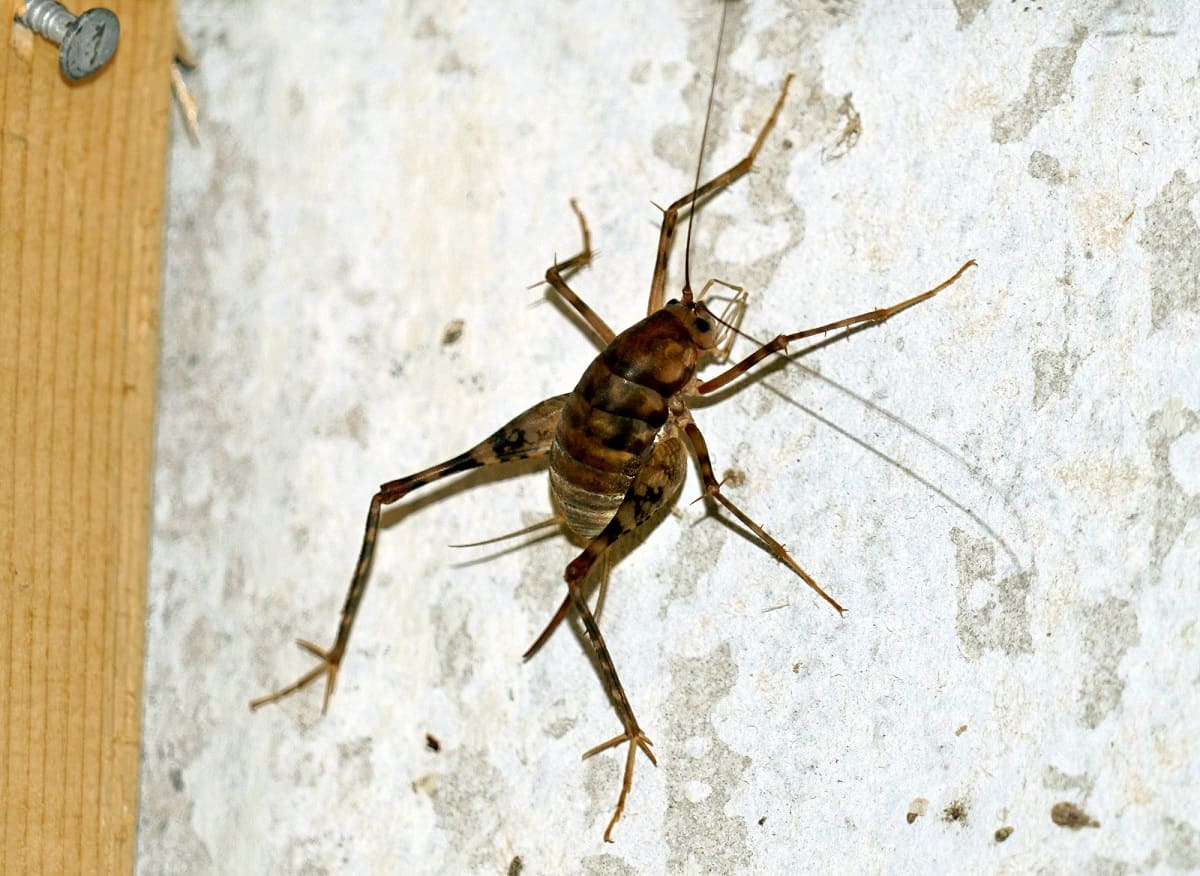

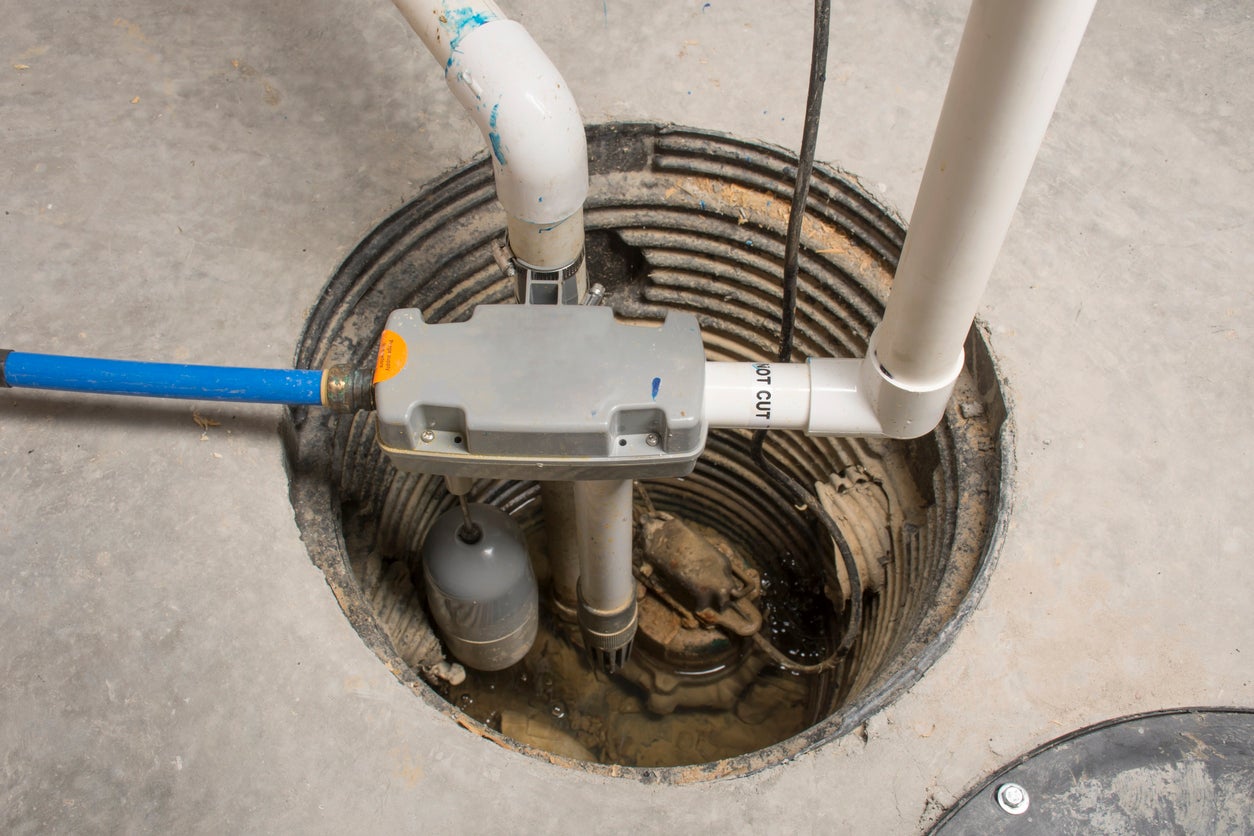

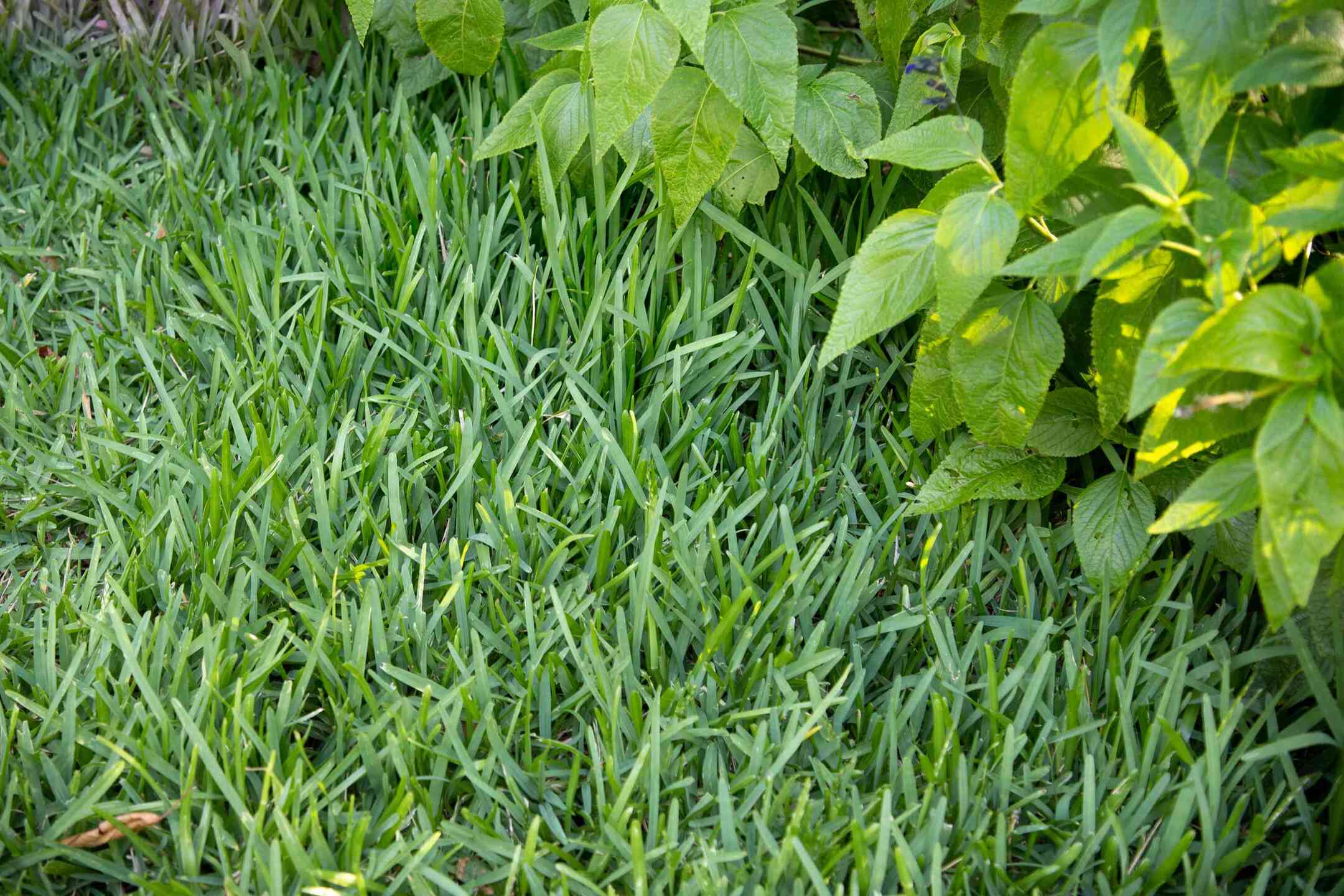
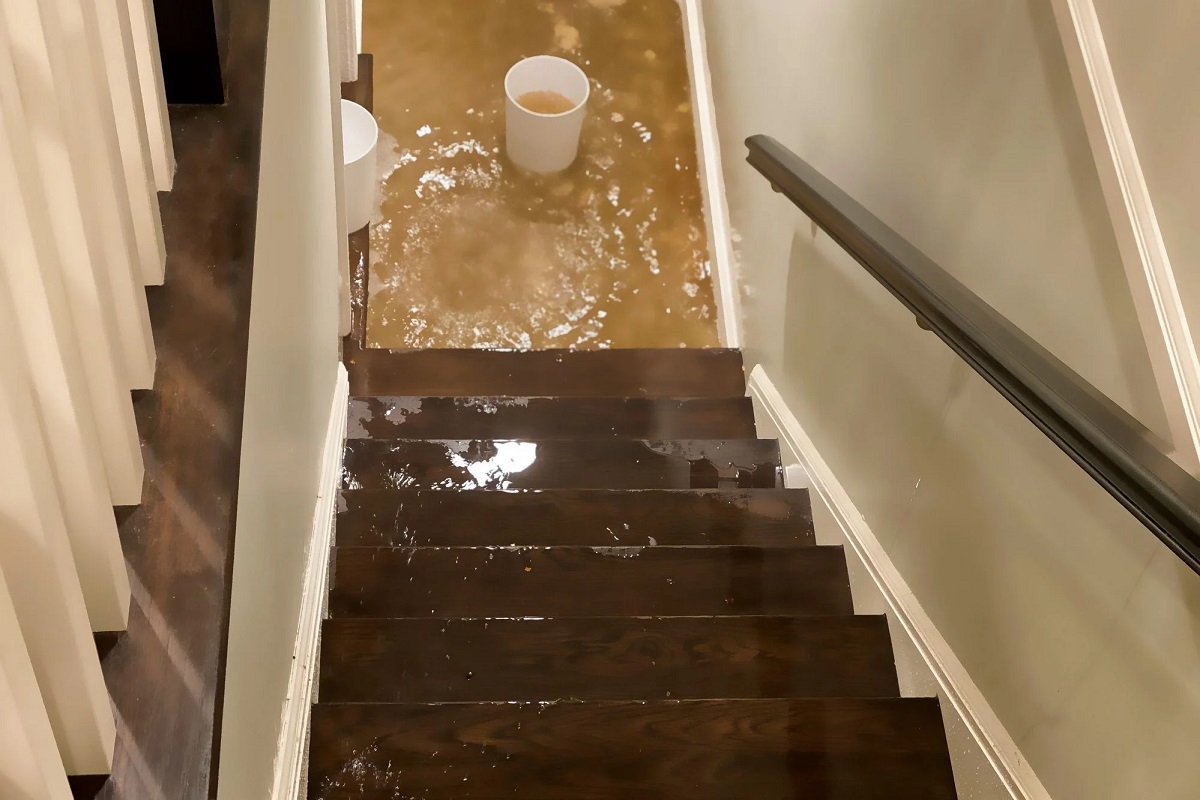


0 thoughts on “Why Are There Centipedes In My Basement”